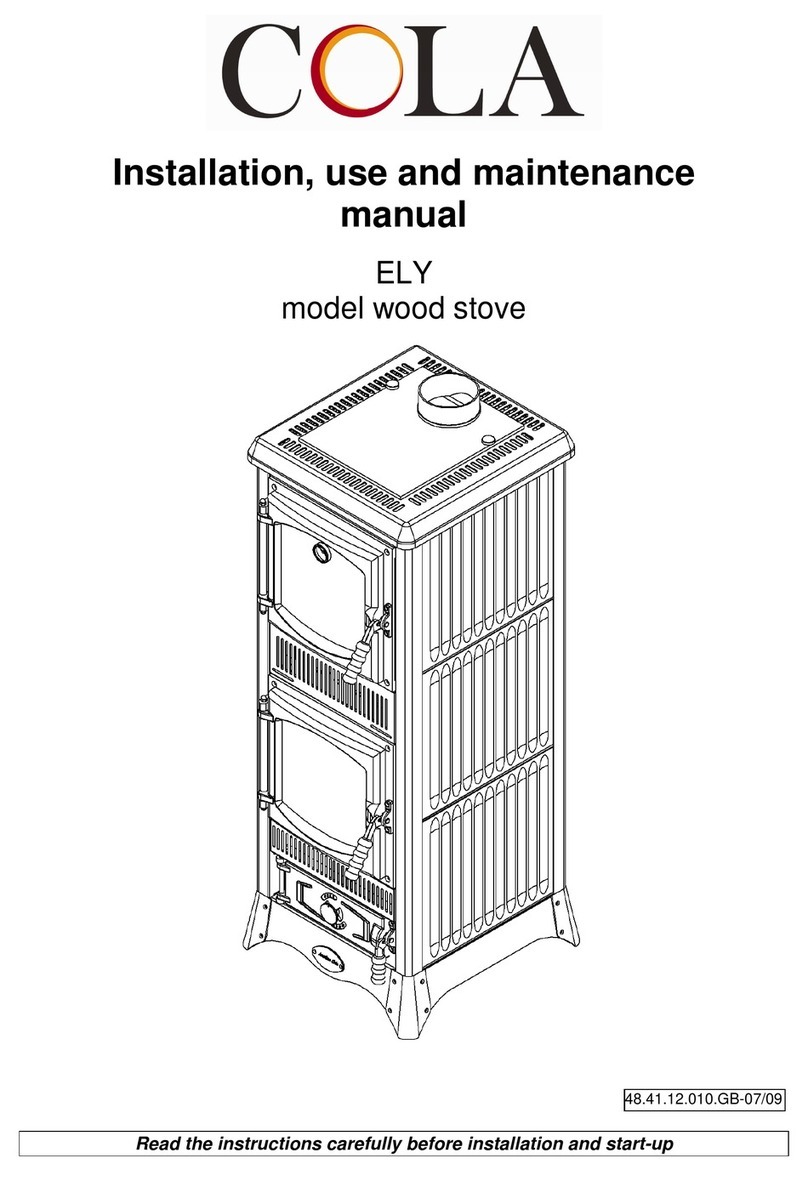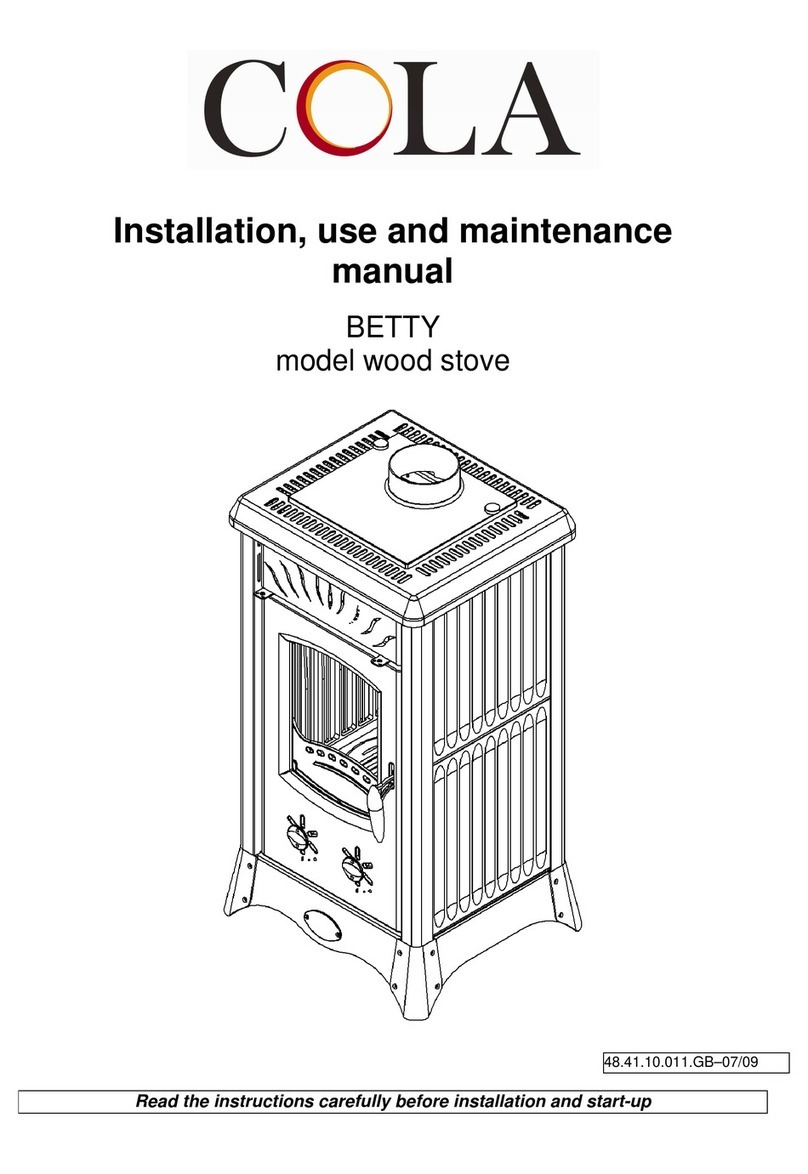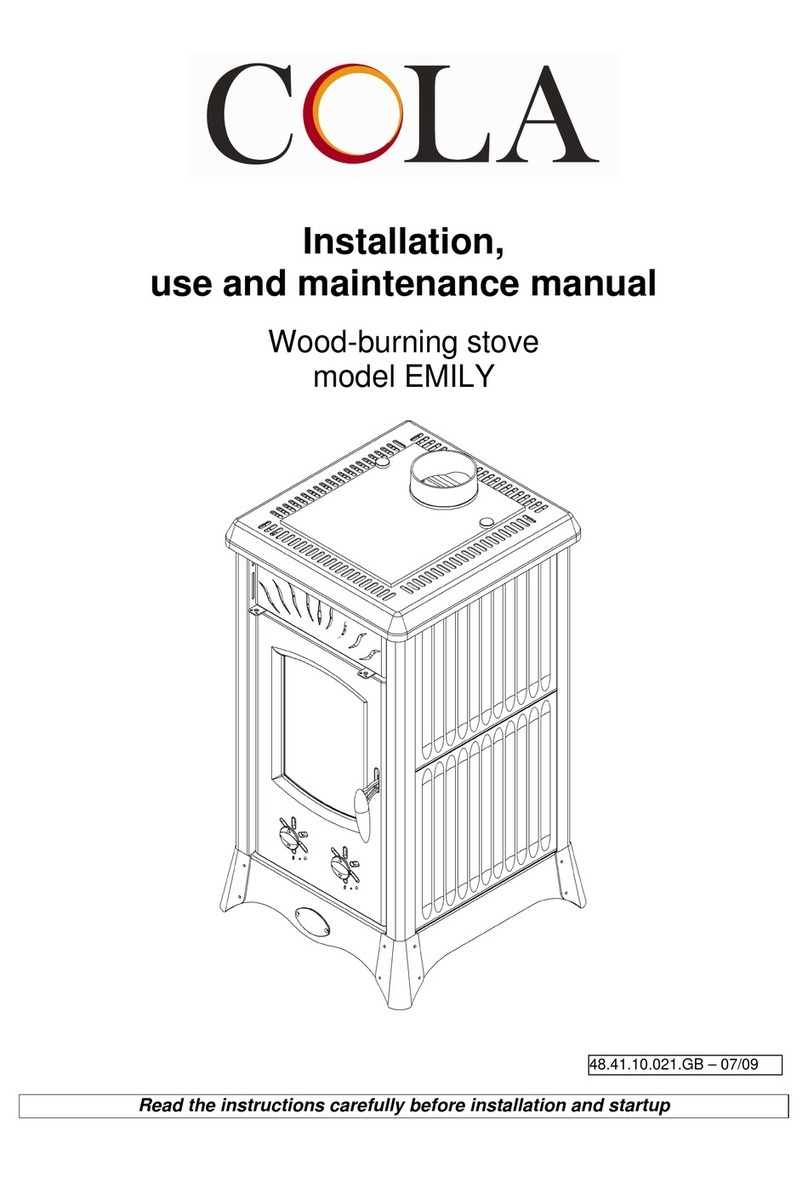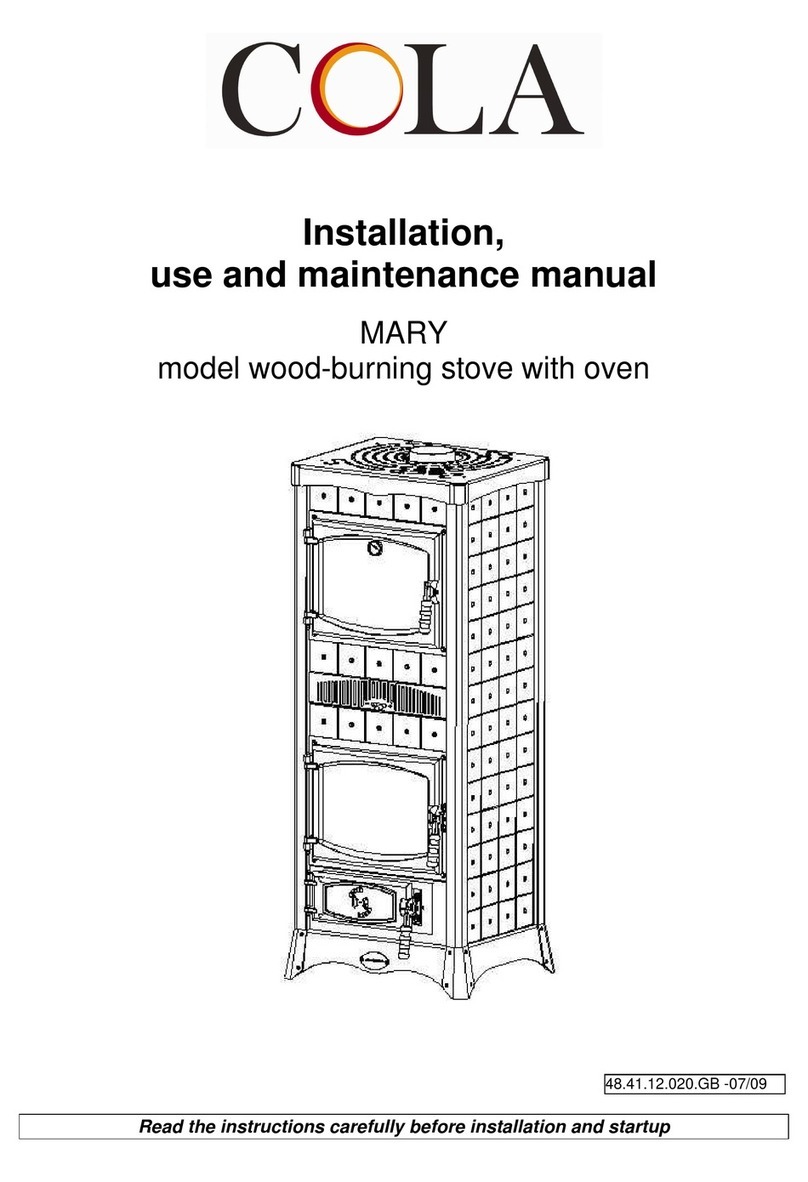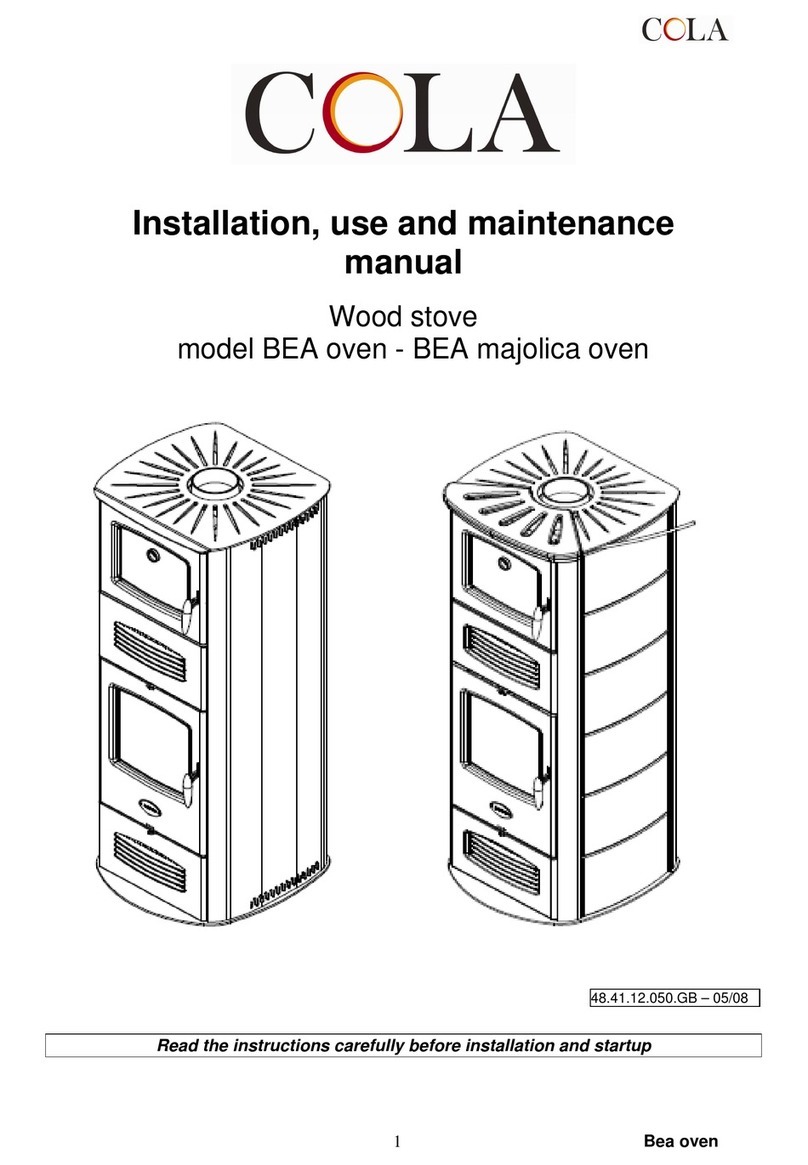
8
Johanna
1.8 Ordering replacement parts
For the end-user:
Contact your service centre and/or dealer to order replacement parts
.
For the dealer:
To request any replacement parts contact the Cola s.r.l. service centre and/or send a fax clearly specifying the
following data:
-stove model;
-serial number;
-date of purchase;
-list of replacement parts;
-details of faults encountered.
- Operations on parts must be carried out by authorised and/or qualified personnel.
- Only use original Cola replacement parts.
1.9 Stove decommissioning
For disposal, the stove must be sealed inside strong packing; contact your local authority for information on how to
proceed in accordance with the current local regulations.
2 – TRANSPORT AND INSTALLATION
2.1 Packing, handling, shipment and transport
The stove can be lifted using a lift truck, inserting the forks (of suitable length) in the special spaces in the wooden
packing.
Make sure the equipment used for lifting and transport can take the weight of the stove, specified on the dataplate and
in this manual.
Avoid taking the load in areas where it could be a danger if dropped.
Set the stove down on the floor carefully without bumping, and position it in the required place; make sure the floor can
take the weight of the stove, otherwise consult a specialised technician.
2.2 Instructions for safe installation
Correct operation of a heating stove depends above all on its installation, which must be carried out by a competent
person, in compliance with the current safety regulations.
An incorrectly installed stove can be the cause of serious accidents (flue, insulation materials, etc., catching
fire).
The sides and back must be at least 20 cm from flammable materials. If the floor is made of flammable material (wood,
carpets, etc.) provide for a protection base in sheet metal (recommended min. thickness 2-3 mm).
2.3 Connection to the flue
The JOHANNA stove must be connected to the flue by means of the collar on the hotplate, using flue pipes that are
readily available on the market. Connection to the flue must be made using strong and stable pipes (recommended
min. thickness 1.5-2 mm). The flue pipe must possibly be straight, to avoid pressure losses, and towards the flue. The
ends of the flue pipe must be tight.
To ensure regular operation, the flue draught with stove operating must be between 10 and 14 Pa.
For optimum stove efficiency, a draught control or
damper must be fitted in the
flue pipe or chimney.
Every unit must eliminate the fumes through its own flue; never use the same flue for several units.
2.4 Room ventilation
The air necessary for combustion, i.e. up to 25 m³ every hour, must be ensured in rooms where stoves with natural flue
draught are installed. The air change must occur through several fixed openings to the outside, whose cross section
must comply with current local regulations. Such openings must be protected with grilles and must never be obstructed.






